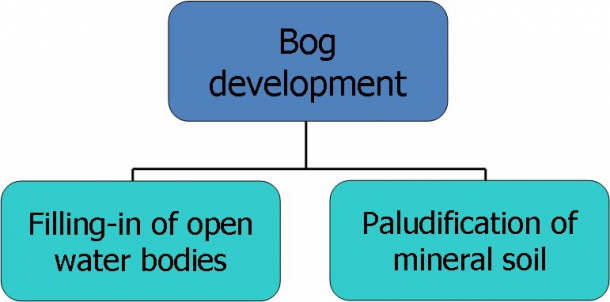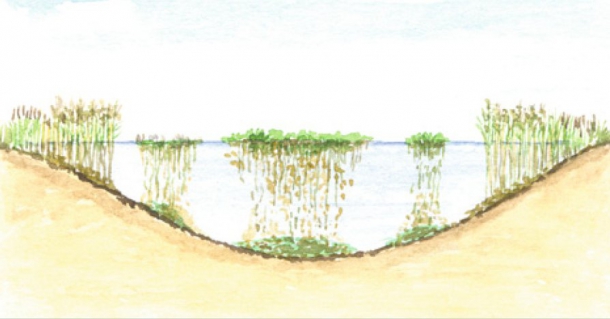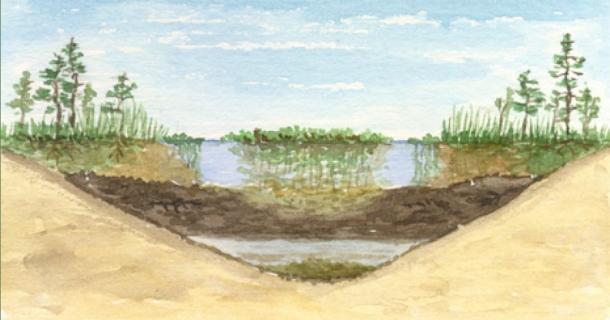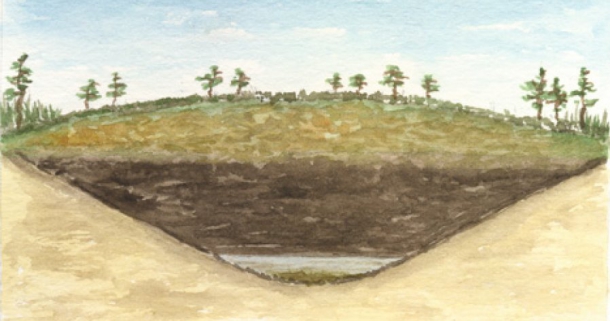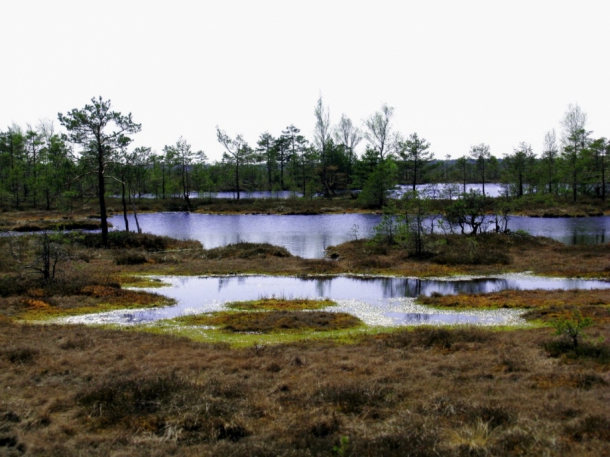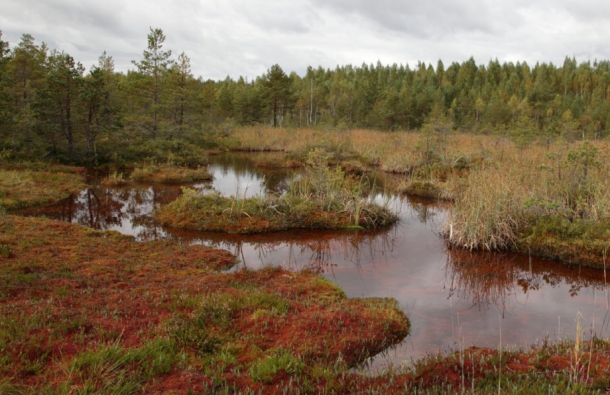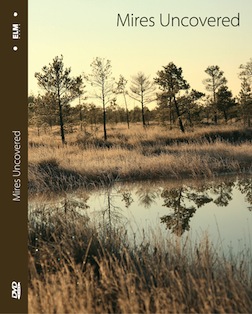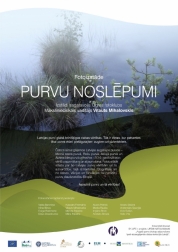How do they create
Bog development
Raised bogs originate in the lower areas of the relief, commonly from transition mires that develop from fens or by ground paludification. The bottom below the fen peat is formed by weakly permeable deposits, clay, aleirite, moraine and sandstone and which are constantly waterlogged.
Filling-in of water bodies starts when sapropel – mixture of remains of water-plants and aquatic animals, clay and sands – accumulates on the bottom of lake. Riparian vegetation slowly fills-in the whole open water surface. Presence of sapropel on mire base clearly indicates to bog development after filling-in of lake or other open water bodies.
The fen starts to originate when margins of the lake become more and more bogged up, and this is considered as the first mire development stage. Dominant plants in the fen are common reed Phragmites australis, bogbean Menyanthes trifoliata, sedges Carex spp. and horsetails Equisetum spp. The grass peat accumulates after decaying of these plants. Fens get nutrients from groundwater.
When the peat layer becomes deeper, role of groundwater to nutrition process diminishes while significance of precipitation gets more important. The mire moves to the next stage of development, to the transition mire. New plant species arise, some of them like Sphagnum and rannoch-rush Scheuchzeria palustris are typical to raised bogs.
Later the peat layer becomes deeper and nutrition from groundwater becomes impossible. At that moment mire reaches the final stage of development – it grows to the raised bog. Plants in the bog receive nutrition only from precipitation and are adapted to such growth conditions. Sphagnum species are the dominant vegetation in raised bogs; their shoots grow for 1 mm each year and are the main component of peat. Peat consists from dead parts of Sphagnum shoots which are mixed with litter of other plants.
Raised bog microrelief
When the peat layer is deep enough and raised bog dome has established, the bog pools start to develop. Bog pools may become relatively wide and can be constantly filled with water and floating aquatic plants. Pools develop when mire becomes larger and pressure on dome slopes increases, as a result forming deep crevices in peat layer. Bog pools may be distributed in concentric or eccentric way.
Hummocks are very typical in raised bogs, and elongated ridges of hummocks can be seen occasionally. Hummocks are distributed both along the mire edge and in the central part of mire. Hummocks are formed by plants that grow in dense cushions thereby compressing the soil and disturbing aeration thus causing weaker decomposition of dead parts of plants and their accumulation.
Peat properties
In raised bogs the peat is poorly decomposed (5 – 20 %). The surface of the bogs can be dome-shaped. That can reach 7 – 8 m height in comparison with the mire margin. It is because the water stays longer in the central part of bog and Sphagnum species grow faster. The peat layer is so deep that the ground water is not accessible anymore for plants. They obtain it only in the form of precipitation. Peat reaction is acid (pH 3 – 4). The total amount of mineral substances ranges between 2 – 4 %.

